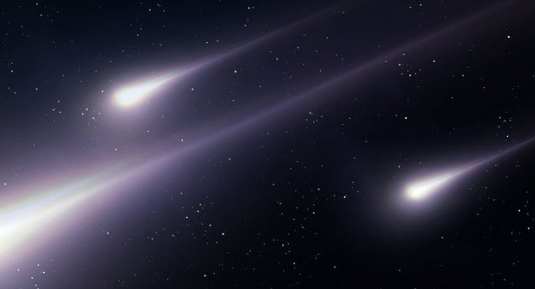The Perseid meteor shower is set to peak Sunday night, offering one of the most impressive celestial displays of 2024. This annual meteor shower, which began in July and will continue through August, reaches its climax overnight from Sunday into Monday. According to experts, this shower is regarded as one of the best of the year, with observers potentially seeing between 50 and 100 meteors per hour under optimal conditions.
PERSEID METEOR SHOWER PEAKS TONIGHT!!
Who’s setting an alarm to check out the show? https://t.co/XVVucB8NbJ
— Erin Alberty (@erinalberty) August 11, 2024
For the best viewing experience, it’s recommended to catch the shower during the pre-dawn hours. However, meteors may also be visible as early as 10 p.m. The Moon will set just as the shower begins to peak, which should enhance visibility. The Old Farmer’s Almanac provides specific moonset times for different regions across the country, helping viewers plan their observation.
The Perseid meteor shower is best viewed from the Northern Hemisphere. To maximize the experience, try to find a location far from city lights. Experts advise that the darker your viewing spot, the more meteors you’ll see streaking across the sky. In darker areas, observers might see between 50 and 75 meteors per hour.
When watching the meteor shower, it’s important to look up and let your eyes adjust to the darkness. There’s no need to focus on a specific direction as meteors can appear anywhere in the sky. Lying on your back and keeping your phone off can help your eyes adjust better. Facing roughly northeast can be beneficial, but taking in as much of the sky as possible will increase your chances of seeing meteors.
It’s the Perseid meteor shower tonight. Here’s to clear skies. 🙏🏾 pic.twitter.com/MiriD2zAi1
— Don Confuso (@Modhabobo) August 11, 2024
In addition to the Perseids, there are two other meteor showers currently active. The Southern Delta Aquariids, which began last month, will continue through August 21, having peaked in late July. The alpha Capricornids also started last month and will remain active until August 11. Following the Perseids, the next major meteor shower, the Orionids, will begin in late September and peak in October. The Orionids are renowned for their brightness and speed, making them one of the most spectacular meteor showers of the year.
Meteor showers occur when numerous meteors enter Earth’s atmosphere over a short period, creating bright streaks of light as they burn up. While most meteors disintegrate before reaching the ground, some survive the journey and are classified as meteorites.
Perseid meteor shower 2024: How to see a stunning fireball tonight https://t.co/Z7F0OgF4KX
— BBC Science Focus Magazine (@sciencefocus) August 11, 2024
Looking ahead, this summer will also feature two more full moons. August’s full moon, known as the Sturgeon Moon, will reach its peak on August 19. September’s full moon, occurring on September 17, will shine just before the start of fall.
Key Points:
i. The Perseid meteor shower will peak Sunday night, offering a great view of up to 100 meteors per hour under ideal conditions.
ii. Best viewing times are during the pre-dawn hours, though meteors can be seen from 10 p.m. onward.
iii. To maximize visibility, find a dark location away from city lights and lie on your back to view the entire sky.
iv. Two other meteor showers, the Southern Delta Aquariids and alpha Capricornids, are active and will continue through mid-August.
v. The Orionids, the next major meteor shower, will peak in October, known for their brightness and speed.
TL Holcomb – Reprinted with permission of Whatfinger News



